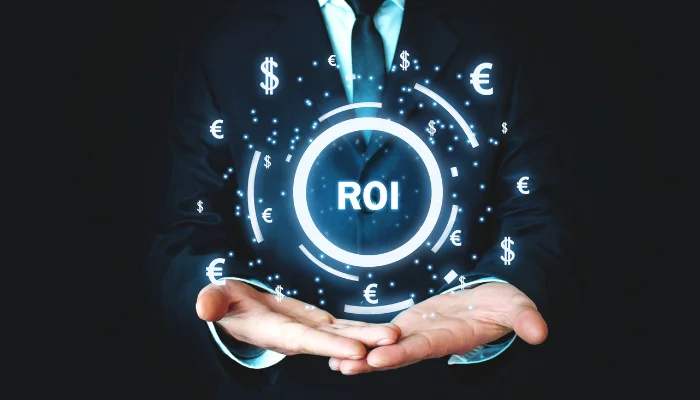
In the bustling digital marketplace, where every click and impression can be quantified, the quest for a substantial Return on Investment (ROI) is paramount for advertisers. Digital advertising campaigns, when executed effectively, can drive significant business growth, enhance brand visibility, and engage target audiences. However, with the increasing complexity of digital landscapes and consumer behaviors, maximizing ROI requires a strategic blend of creativity, analytics, and optimization. This blog delves into practical strategies for enhancing the ROI of digital advertising campaigns, ensuring your marketing dollars are not just spent but invested wisely.
ROI in digital advertising measures the profitability of your campaigns, comparing the revenue generated to the cost of the ads. A positive ROI means your campaigns are effectively driving more revenue than the cost to run them, while a negative ROI indicates a need for strategy recalibration. Calculating ROI involves tracking conversions that can be directly attributed to your advertising efforts and comparing those to the costs incurred during the campaign.
Key Components of ROI:
Cost: This includes all expenses related to the campaign, such as ad spend, platform fees, and any third-party services.
Revenue: The income generated from conversions attributed to the digital advertising campaign.
Attribution: Understanding which parts of your campaign contributed to conversions is crucial for accurate ROI calculation.
1. Define Clear Objectives and KPIs
Before launching any campaign, clearly define what success looks like. Is it brand awareness, lead generation, or direct sales? Setting specific, measurable objectives and Key Performance Indicators (KPIs) will guide your strategy and provide benchmarks for evaluating performance.
2. Target Audience Segmentation
The more precisely you can target your ads, the higher the likelihood of reaching consumers who are interested in your product or service. Utilize data analytics to segment your audience based on demographics, interests, behaviors, and purchasing history. Tailoring your message to these segments increases relevance and, consequently, the effectiveness of your ads.
3. Leverage the Right Platforms
Not all advertising platforms are created equal, especially when it comes to reaching your target audience. Choose platforms where your audience is most active and engaged. For B2C companies, this might be Instagram or Facebook, while B2B campaigns might see better results on LinkedIn or industry-specific forums.
4. Optimize Creative Elements
Your ad’s creative elements — copy, design, and call-to-action (CTA) — play a significant role in its performance. A/B testing different versions can reveal which combinations resonate best with your audience. Remember, even minor changes in wording or design can significantly impact conversion rates.
5. Utilize Advanced Ad Targeting Features
Take full advantage of the sophisticated targeting features offered by digital advertising platforms. This includes retargeting campaigns that reach users who have previously interacted with your brand, lookalike audiences that mirror your existing customers, and contextual targeting based on content relevance.
6. Implement Conversion Tracking
To accurately measure ROI, you must track conversions resulting directly from your ads. Use tracking pixels and UTM parameters to monitor actions taken on your website or landing page, attributing them back to specific campaigns, ad sets, or ads.
7. Continuously Analyze and Optimize
Digital advertising is not a set-it-and-forget-it endeavor. Regularly review campaign analytics to identify what’s working and what isn’t. Use these insights to reallocate budget to high-performing ads, pause underperforming ones, and experiment with new approaches.
8. Focus on Customer Lifetime Value (CLV)
Maximizing ROI isn’t just about immediate conversions; it’s also about considering the long-term value of each customer. Strategies that encourage repeat business and customer loyalty, such as loyalty programs or exclusive offers, can significantly enhance the overall ROI of your campaigns.
Ad Fatigue: Keep your campaigns fresh by regularly updating creative elements and targeting parameters to avoid ad fatigue among your audience.
Rising Ad Costs: Combat rising ad costs by improving ad relevance and quality scores, which can lower the cost per click (CPC) or impression (CPM).
Data Privacy Regulations: Stay informed about data privacy regulations like GDPR and CCPA to ensure your advertising practices comply and maintain consumer trust.
Also Read: Virtual Events and Digital Marketing: A Symbiotic Relationship
As technology and consumer behaviors evolve, so too will strategies for maximizing ROI in digital advertising. Emerging trends, such as AI-driven predictive analytics, voice search optimization, and augmented reality ads, present new opportunities and challenges. Advertisers who stay ahead of these trends, adapting their strategies to leverage new tools and platforms, will be best positioned to achieve and exceed their ROI goals.
Maximizing ROI in digital advertising campaigns requires a strategic approach grounded in data, audience understanding, and continuous optimization. By setting clear objectives, leveraging advanced targeting techniques, and remaining agile in the face of changing market dynamics, marketers can significantly enhance the effectiveness of their digital advertising efforts. Remember, the goal is not just to reach your audience but to connect with them in meaningful ways that drive conversions and foster long-term loyalty. In the digital marketing arena, where every click holds value, ensuring your campaigns are crafted for maximum impact is essential for sustained success.






DigiDir Digital Solutions Private Limited | All Rights Reserved 2018- 2024
Digital Marketing Agency/ Company in Noida, Delhi NCR, India